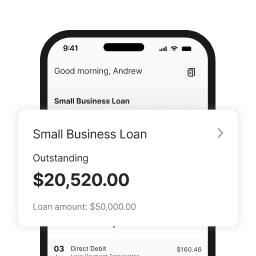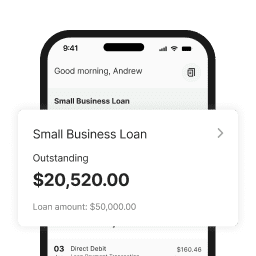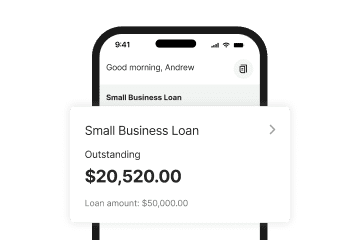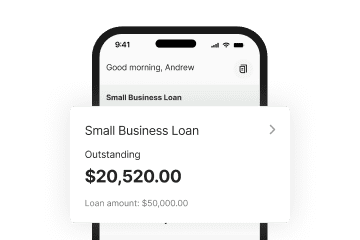A business loan is a big step. This guide gives you a practical playbook to manage the risks, covering everything from cash flow planning to avoiding common borrowing errors.
At a glance
- Reducing risk on a business loan starts with having a clear purpose and timing that supports growth rather than just short-term gaps.
- Ensure repayments stay affordable by comparing revenue and costs across best, worst, and most-likely scenarios, with a buffer set aside for slower periods or unforeseen events.
- Common loan mistakes to avoid include underestimating the total cost, stacking multiple facilities, and signing a Personal Guarantee without understanding the exposure.
Committing to a business loan is one of the most important financial decisions you can make. Funding growth can be exciting; however, ongoing repayments, a dip in sales, or unexpected bills can make any prudent business owner pause to weigh the risks. This kind of thoughtful planning is what protects a business in the long run.
Right now, Australian businesses should be considering those risks more carefully. As of August 2025, the Reserve Bank of Australia has lowered the cash rate to 3.60%, its lowest point in two years.
But that doesn’t tell the whole story. The average rates for small business loans remain at 6.60%, as the gap between policy rates and the cost of borrowing widens. This growing spread means careful planning is essential if you are a business owner considering new debt.
The good news is that with a clear plan, you can make the most of growth opportunities while still protecting the future of your business. This guide is your step-by-step playbook for reducing loan risk, so you can borrow with peace of mind.
Is a business loan the right move for your business right now?
The first step in reducing risk is making sure a business loan is the right decision in the first place.
Start with the purpose. A loan is easier to justify when you use it for something with a measurable return, such as equipment to increase output or the upfront costs of a secured contract. When you can draw a straight line from the loan to new revenue, the risk is far easier to manage.
If the loan is mainly to cover temporary shortfalls, it could be worth exploring other solutions, such as a business line of credit. Timing also matters. If your business is heading into a busy season, then additional revenue can support repayments. If you are facing an uncertain period, it may be better to hold off.
Imagine you run an online retail store and you can secure a supplier discount on $30,000 of stock ahead of Black Friday sales. However, payment is due within two weeks. By using a business loan to lock in the stock early, you will benefit from higher margins during the major sales period. The loan has a clear purpose, a direct return, and timing that aligns with your revenue cycle.
With your purpose and timing locked in, it’s time to see if the numbers stack up.
Calculate exactly what your business can safely afford
Once you know a loan is right for you, the next step is working out what you can afford. This comes down to two things: capacity and serviceability.
Capacity is the maximum amount of debt you can take on while still supporting day-to-day operations. Serviceability is whether your cash flow can reliably cover the repayments once they start.
Put simply, if regular loan repayments would leave your business short of cash for everyday expenses like wages, suppliers, or rent, then the loan is too big.
Take your online retail store. Weekly sales are $12,000, and costs are $9,000, leaving $3,000 in cash flow. A $30,000 loan with $1,500 weekly repayments leaves a manageable $1,500 buffer. But if repayments climb to $3,000, that margin vanishes and risk increases sharply.
Prospa’s business loan calculator can show you exactly how much your business can afford to borrow and realistically repay.
Stress-test your cash flow and build a buffer
Knowing you can afford repayments in one scenario is important. But businesses don’t run on averages. They run through ups and downs. Stress-testing your cash flow helps you see how a loan fits into the best, worst, and most likely outcomes.
This is where a cash buffer comes in. By ensuring you have a reserve, you create a safety net that protects your business during slower periods. A buffer doesn’t remove risk, but it reduces the chance of scrambling for funds when sales are down.
Here’s how it might look for the online retail store:
| Scenario | Sales | Costs | Cash flow | Repayments | Buffer | Outcome |
|---|---|---|---|---|---|---|
| Best Case | $14,000 | $9,000 | $5,000 | $1,500 | $3,500 | Strong position, repayments easily covered |
| Most Likely | $12,000 | $9,000 | $3,000 | $1,500 | $1,500 | Manageable, repayments covered with a buffer |
| Worst Case | $9,500 | $9,000 | $500 | $1,500 | ($1,000) | Shortfall, repayments not fully covered |
Logical scenario planning gives you a clearer view of the risks and shows how much breathing room you really have.
Building these scenarios into your business loan repayment planning is one of the most important ways to reduce risk and protect your business.
Match the loan terms and structure to your needs
The wrong loan structure can create unnecessary risk. That is because your choice of loan type, term length, and repayment flexibility determines how manageable the debt will be over time.
One of the first decisions is whether to take out a secured or an unsecured business loan. A secured loan is tied to assets such as property or equipment. An unsecured business loan gives you access to funds based on your performance and credit profile, without putting assets on the line. For many small businesses, unsecured borrowing is a safer way to manage risk.
The length of the loan is critical. A shorter term means steeper repayments, but you clear the debt faster and pay less in total cost and fees. A longer term lowers each repayment, which can ease cash flow, but you end up paying more overall across the life of the loan.
Flexibility is another factor. Features such as the option to make extra repayments without penalty, or redraw when you need funds, can give you more control. In some cases, comparing a business loan vs line of credit may reveal that a revolving facility is a better fit.
When the loan structure lines up with your business cycle and goals, borrowing will support growth instead of adding pressure.
How to avoid common business loan mistakes
Careful planning also involves knowing what to avoid. These are the common mistakes to steer clear of:
- Borrowing without a repayment buffer. A loan that only works if every week goes to plan is high risk. Without a buffer, even a small dip in sales can make repayments difficult. Building in surplus cash is one of the simplest ways to stay in control.
- Underestimating the total cost. Focusing only on the interest rate can be misleading. Fees and charges often add up, and the total cost across the life of the loan is what really matters.
- Stacking multiple loans. Taking on more than one facility is a major risk. Stacked repayments quickly increase the likelihood of loans becoming unmanageable.
- Signing a Personal Guarantee too quickly. A Personal Guarantee makes you personally liable if the business cannot repay. Before committing, make sure you understand the full exposure and what is at stake. See our guide to Personal Guarantees explained for details.
Avoiding these mistakes helps you borrow more safely.
Lower your loan risk checklist
Every application carries risk, but being prepared lowers it. Run through this checklist to ensure your business is ready for the next step:
| Small Business EOFY Checklist |
|---|
Following these steps will give you the confidence to borrow responsibly.
Prefer a PDF version? You can also download the Lower Your Loan Risk checklist and start ticking things off.
From planning to action
Ultimately, reducing the risks of borrowing comes down to good planning. By being clear on purpose, testing affordability, and choosing the right structure, you will make a small business loan easier to manage and put yourself in complete control of the process.








